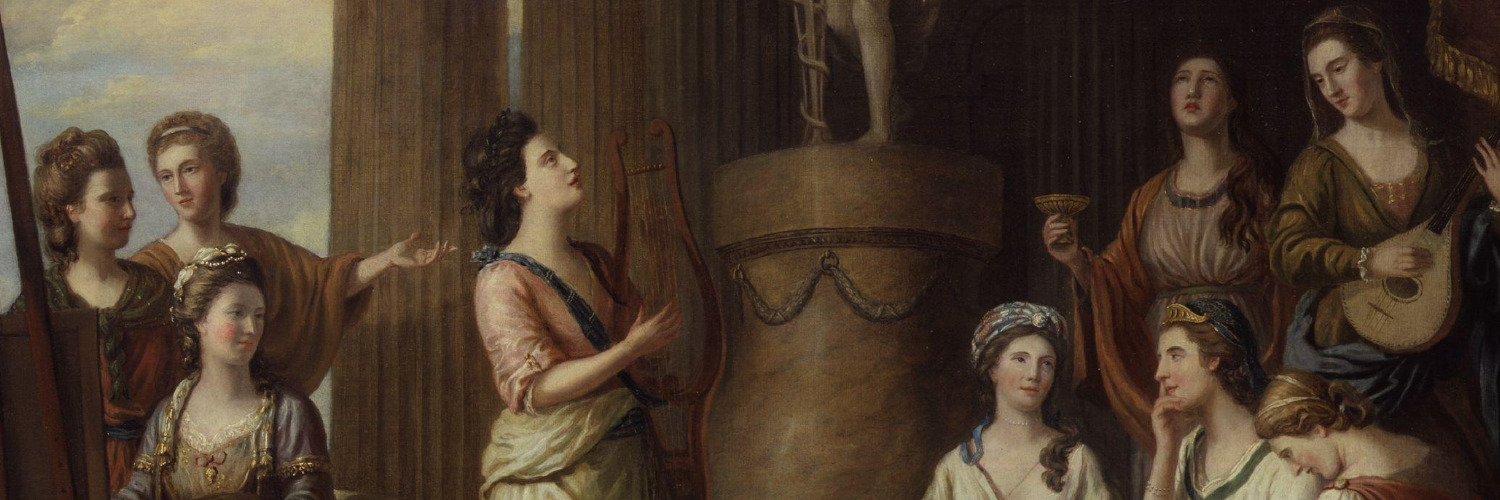- Physical form: One sheet folded into 2 leaves (19 x 23.4 cm)
- Cover: Miss Rickards / Church street / Hampstead / London
- PM: BRIDGEND 10 o’Clock / Jy 22 / 99 F.NOON [another, in 3 lines, only 2 readable:] J[U?]L 22 / 99
- WM: LVG / 1794
- SM: Misc MS 4339
I am much obliged to my dear Lydia for her kind & interesting letter, tho very sorry to find that she & Mrs Rickards are still detained from their journey, & by a cause so distressing.
—With regard to ourselves, we spent a fortnight at Clifton very agreeably in the society of the Edgeworth family,
which contained, besides the members of it you saw at Hampstead, a neice of Mr Edgeworth’s a very cultivated woman, & Mrs Edgeworth’s brother— From Clifton we crossed the Severn, but were disappointed in our view of seeing some of the beautiful part of Wales by the weather, for it rained in torrents during our little journey. We have been in this place a week yesterday, solely for the society of our friends Mr & Mrs Estlin,
for of picturesque beauties this part of Glamorganshire has not much to boast, except indeed in sea views, which are here very grand. The coast is bold & rocky, & full of caverns. As the sea forms the grand feature of the country, it is likewise the chief source of adventures. Every one has some tale to tell of danger & escape from that formidable enemy. One has been wrecked on the sands & brought off in a small boat which a breath of wind would have overset. Another has been envellop’d while walking on the sands by a sudden fog & obliged
[fol 1v] to feel his way back amidst precipices & the roar of waters. A third has been nearly carried away by the current while bathing, & a fourth overtaken by the tide in some of the recesses of the rocks, & nearly cut off from the possibility of return. To the gloomy terror of these ideas, the weather, since we came here, has much contributed, for we have not had one day free from rain & some very stormy. We have had fires every day, & so has every body else that I have seen. Besides the influence of the cool breezes from the sea, the walls are built with sea sand which never thoroughly dries. There are no houses here to be had but cottages, not like Lady Camelford’s,
but real thatched cottages. Our’s is a mile from our friends’, & I ride there every day upon old Dobbin, behind a young lady—I suppose you think I call her a young lady by courtesy only, but I assure you it is no such matter, for she is a very elegant woman, highly accomplished, & a great addition to our party—We look up with veneration to the little market town of Bridgend, which is four miles off, & I was obliged to send there for a pen before I could write to you—In short nothing can be more compleat retirement than this place. I hear the Welsh gutturals crackling all around me
[fol 2r] & I hope to morrow to hear a sermon in Welsh, & perhaps to assist at a meeting of jumpers, who abound in this neighborhood.
I am pleased with the look of the Welsh; they have black hair & black lively eyes, with an expression of vigour & chearfulness; many of the women are without shoes & stockings—Mr Estlin says they are a very innocent race. the sin that most easily besets them, it seems, is sheep stealing; to which indeed they have great temptations, for the sheep wander abroad upon the common without any body to watch them—Now for our plans. I beg you will tell Mrs Rickards how much [tear] her kind attention in pressing us to fulfill them indepe independently of yours, tho we are certainly much disappointed to find that you are kept at home & kept by so distressing a circumstance. Pray remember me to the poor sufferer. She has our sympathy & best wishes. We intend to cross the water from hence to Minehead
some time in the next week. A fortnight is all we mean to spend here, but as our passage is by water, it may be delayed some days for weather; otherwise it will be very convenient, for we are to go with a gentleman of Bridgend, who is taking his son to Mr Kenrick to be the first pupil of a new Academy they are trying to form at Exeter.
At Exeter we shall hope to hear again from you. If you go your journey, which I still hope for your sake, we may
Possibly
[fol 2v] possibly extend our plan in Devonshire, if you do not, we shall keep as near to our intended six weeks absence as circumstances will allow. Send your letters still to Charles
— I rejoice to hear you have been so diligent & spent your time so usefully, & I thank you much for all the information relative to our friends— Mrs Rickards will consider this letter as equally written to her. Be assured I shall be happy to meet you both again, & so will Mr Barbauld, who, with me, desires to be remembered to Miss Harrop
^& all our friends^—I am dear Lydia

